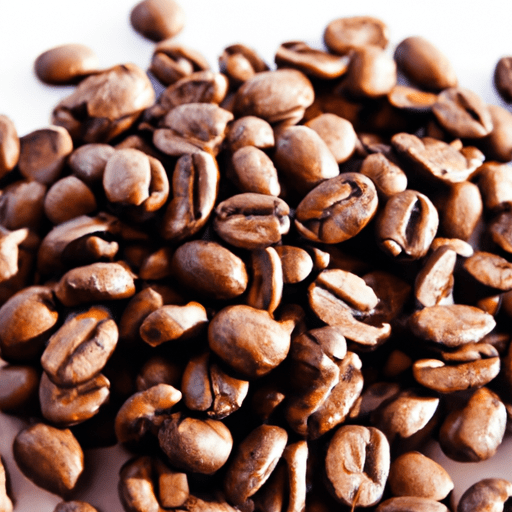The Art of Coffee: From Bean to Brew
Coffee is undoubtedly one of the most beloved drinks around the world. Its rich, bold flavor and invigorating aroma have made it a staple in many kitchens and cafes. But have you ever wondered about the journey this magical elixir takes from bean to brew? In this blog post, we will explore the art of coffee, its versatile uses in cooking, its nutritional value, and some interesting history and facts that will make you appreciate this beloved beverage even more.
The Flavorful Profile
Coffee, in its basic form, is a beverage derived from roasted coffee beans. The flavor profile of coffee can vary greatly depending on several factors, such as the type of bean, the roast level, and the brewing method. From the bright acidity of a fruity Ethiopian coffee to the smooth, chocolatey notes of a Brazilian bean, coffee offers a diverse range of flavors that cater to different palates.
Cooking with Coffee
Coffee isn’t just for sipping in the morning or as an afternoon pick-me-up. It has also found its way into the culinary world, adding depth and complexity to various dishes. The bitter and earthy tones of coffee make it an excellent ingredient to enhance both savory and sweet recipes.
In savory cooking, coffee can be used as a rub or marinade for meats, adding a smoky and slightly bitter flavor. It works particularly well with beef, enhancing the richness of the meat. Coffee can also be incorporated into sauces and gravies to give them a unique depth of flavor.
When it comes to sweet treats, coffee lends itself beautifully to desserts. Adding a touch of coffee to chocolate-based recipes like cakes, brownies, and truffles intensifies the richness and enhances the chocolatey flavors. Coffee-infused creams, mousses, and ice creams provide a delightful twist to classic desserts, creating a harmonious balance of sweetness and bitterness.
Nutritional Value
Aside from its culinary versatility, coffee also offers some nutritional benefits. A cup of black coffee contains virtually no calories, making it a low-calorie alternative to sweetened beverages. It is also a rich source of antioxidants, which help protect the body against damage caused by harmful free radicals.
The caffeine content in coffee is well-known for its stimulating effect on the central nervous system. It can increase alertness, improve focus, and boost physical performance. However, it is important to consume coffee in moderation, as excessive caffeine intake may lead to jitteriness or insomnia in some individuals.
A Journey Through History
The history of coffee dates back centuries ago, with its origins traced to the highlands of Ethiopia. Legend has it that a goat herder named Kaldi noticed that his goats became unusually energetic after nibbling on the red berries of a certain plant. Curious, Kaldi tasted the berries himself and experienced the same invigorating effect. And so, the discovery of coffee began.
From Ethiopia, coffee cultivation spread to the Arabian Peninsula and eventually made its way to Europe during the Renaissance period. Coffeehouses became popular gathering places for intellectuals and artists, fostering lively discussions and stimulating creativity. Today, coffee is enjoyed worldwide, connecting people and cultures over a shared love for this remarkable beverage.
Fun Facts about Coffee
- The word “coffee” is believed to have originated from the Arabic word “qahwah.”
- Brazil is the largest producer of coffee, followed closely by Vietnam and Colombia.
- The most expensive coffee in the world, Kopi Luwak, is made from coffee beans that have been eaten and excreted by civet cats before being roasted.
- Finland is known to be the country with the highest coffee consumption per capita.
- The term “espresso” comes from the Italian word meaning “pressed out” or “expressed.”
So the next time you enjoy a cup of coffee, take a moment to appreciate the journey it has taken from bean to brew. Whether in a comforting morning mug or a delectable dessert, coffee continues to captivate our taste buds and ignite our senses. Embrace the art of coffee and savor every sip of this remarkable beverage. Cheers!
Origin: Coffee is believed to have originated in the Ethiopian plateau around the 9th century. Legend has it that a herder noticed his goats becoming energized after eating coffee berries, leading to the discovery of coffee.
Common Uses: Coffee is primarily consumed as a popular beverage around the world and is also used as an ingredient in various culinary creations, such as desserts, sauces, and meat rubs. It can be enjoyed in its natural form, brewed as drip coffee, or prepared using different methods like espresso, French press, or cold brew.
Nutritional Benefits: Coffee is a low-calorie beverage when consumed without added sugars or creamers. It is a source of antioxidants, such as chlorogenic acid and melanoidins, which may have potential health benefits. Coffee also contains small amounts of essential nutrients like riboflavin (vitamin B2), niacin (vitamin B3), magnesium, and potassium.
Unique Properties: Coffee contains caffeine, a natural stimulant that blocks the neurotransmitter adenosine, leading to increased alertness and reduced fatigue. The caffeine content in coffee can vary depending on the type of coffee beans, roast level, and brewing method. Additionally, coffee has a complex flavor profile with over a thousand aromatic compounds contributing to its taste and aroma.
Historical Significance: Coffee has played a significant role in various cultures throughout history. It has been an integral part of social gatherings, ceremonies, and even religious rituals. Coffeehouses, known as “qahveh khaneh,” originated in the Middle East in the 15th century and later spread to Europe in the 16th century, becoming centers of social and intellectual exchange. The popularity of coffeehouses played a role in the rise of the Age of Enlightenment. Today, coffee is one of the most consumed beverages globally, with an industry deeply rooted in traditions and innovation.




Use the share button below if you liked it.
It makes me smile, when I see it.